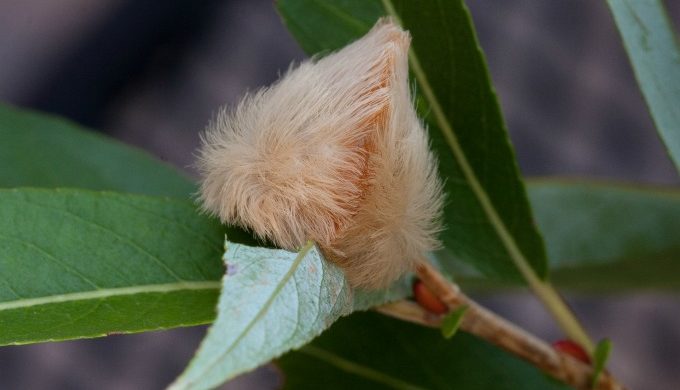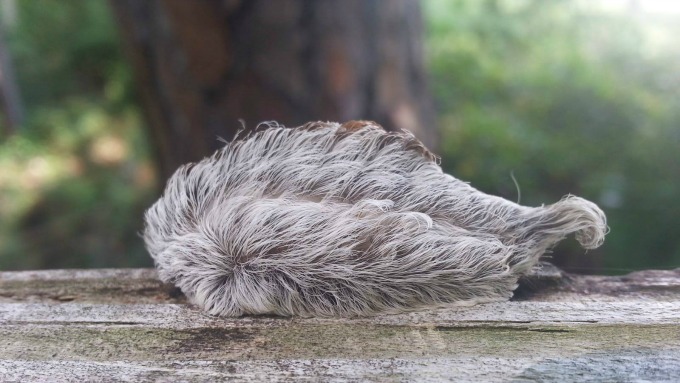In the fall, we see greater numbers of certain insects due to the increase in plant matter that has fallen on the ground. One of these creatures that we often come into contact with is the Texas Asp. While the Texas asp’s appearance might suggest, “pet me!” his venomous hairs scream, “Ouch!”
Nature
The Texas Asp: Do Not Pet This Cuddly-Looking, Fuzzy Caterpillar
They’re Flannel Moth Larvae

Photo: Flickr/Carla Kishinami
Most stinging caterpillars belong to the insect family known as flannel moths. Flannel moths get their name from the flannel-like appearance of the wings of the adult, which are clothed with loose scales mixed with long hairs. The immature stages of flannel moths are caterpillars which are clothed with fine hairs and venomous spines. The spines, when brushed against the skin, produce a painful rash or sting.
The best-known flannel moth and stinging caterpillar in Texas is the puss moth caterpillar, Megalopyge opercularis, commonly called an “Asp.” This caterpillar is often abundant and may infest shade trees and shrubbery around homes, schools, and in parks. They are of little importance as enemies of shade trees, but they can cause a severe sting. When a puss moth caterpillar rubs or is pressed against the skin, venomous spines stick into the skin, causing a severe burning sensation and rash. Fun fact: Once the caterpillar turns into a flannel moth, he’s no longer venomous!
The Texas asp is teardrop-shaped, and, with their long, silky hairs, resemble a tuft of cotton or fur. Their color varies from yellow or gray to reddish-brown, or a mixture of colors.
The Texas Asp has Caused School Closures

Photo: Facebook/sjrwmd
Southern flannel moth caterpillars tend to be more common in the fall and rarely cause serious damage to trees; however, they can pose a health hazard to children and gardeners. In the past, Texas asps have been so numerous in some years that schools in San Antonio in 1923 and Galveston in 1951 were closed temporarily because of stings to children.
Intense, throbbing pain develops immediately or within five minutes of contact with the caterpillar. Stings on the arm may also result in pain in the axillary (armpit) region. Erythematous (blood-colored) spots may appear at the site of the sting. Other symptoms include headaches, nausea, vomiting and sometimes shock or respiratory stress. Pain usually subsides within an hour and spots disappear in a day or so.



